- Just 15 Minutes of Fast Walking a Day Could Save Your Life, New Study Finds SciTechDaily
- The 15-Minute Walking Habit That Could Extend Your Life Study Finds
- 15 Minutes of This Exercise May Lower Mortality Risk by 19%, New Study Says EatingWell
- This Simple Trick Could Help Older Adults Stay Fit خبرگزاری آنا
- Nintendo quarterly revenue surges thanks to Switch 2 Iosco County News Herald
Category: 8. Health
-
Just 15 Minutes of Fast Walking a Day Could Save Your Life, New Study Finds – SciTechDaily
-

Feel Good Knees Introduces “Knee Self-Restoration Ritual”
New York, Aug. 02, 2025 (GLOBE NEWSWIRE) —
For decades, doctors claimed that cartilage couldn’t heal itself. But recent studies—led in part by Dr. Constance Chu of Stanford University—are challenging that belief. Using MRI imaging, researchers have observed signs of natural knee joint regeneration, inspiring new approaches to non-invasive recovery. One such approach, featured in the Feel Good Knees system, is gaining traction among active adults and seniors looking to avoid surgery and reclaim pain-free movement. This 5-minute “Knee Self-Restoration Ritual” is now being hailed as a gentle, science-guided method for unlocking the body’s hidden healing potential.
To see how this gentle routine is changing the way knee health is approached, visit the official Feel Good Knees Self-Healing System resource page.
Why Interest in “Knee Self-Healing” Is Surging in 2025
In 2025, more adults than ever are rethinking how they approach knee pain. A combination of rising surgery costs, drug-related risks, and breakthrough science is fueling public demand for safer, simpler alternatives that focus on the body’s natural ability to heal.
Searches for terms like “natural knee pain relief,” “cartilage regeneration,” and “avoid knee surgery” have exploded on Google, while platforms like Reddit, TikTok, and YouTube are flooded with user-driven discussions around joint health, body alignment, and pain-free movement at any age.
Why the sudden shift?
For starters, many are becoming disillusioned with traditional solutions. NSAIDs—commonly used anti-inflammatory medications—are now under increasing scrutiny. According to the American Journal of Medicine, NSAIDs are linked to over 16,500 deaths each year from gastrointestinal bleeding, while countless others suffer from liver and kidney complications caused by prolonged use【Source: AJM; Singh 1998】.
Surgical options aren’t much better. The average knee replacement surgery in the U.S. costs between $30,000 and $50,000, and can leave patients with long recoveries, visible scarring, and recurring discomfort【Source: Healthline; “What You Need to Know About Knee Surgery”】. And according to research published in Harvard Health, knee replacement implants often need to be replaced again after 10–15 years, creating additional surgeries and financial burdens down the line【Source: Harvard Health Publishing, 2023】.
But perhaps the most exciting reason for this surge in interest is emerging from the scientific community itself.
In a pivotal two-year study published in the Journal of the American Medical Association, researchers tracked 325 patients with knee cartilage degeneration. Using high-resolution MRI technology, they discovered that 37% of patients showed signs of cartilage healing—an outcome previously believed to be impossible. Their conclusion: “MRI results showed cartilage repair and healing.”【Source: JAMA, 2023】
This finding was further echoed by Dr. Constance Chu, a renowned Stanford Orthopedic Surgeon and Professor, who has led research showing that articular cartilage possesses self-repair capacity under the right mechanical and biological conditions. Her stance directly contradicts decades of conventional wisdom that once damage occurs, it’s permanent【Source: Stanford Medicine; Dr. Constance Chu Lab】.
These data points, combined with mounting anecdotal success stories, have created a groundswell. People no longer want to merely “manage” knee pain—they want to overcome it. And they’re now open to exploring simple, non-invasive rituals that support their body’s innate healing abilities.
In short, the concept of “knee self-healing” is no longer pseudoscience—it’s a growing global movement, grounded in evidence, and propelled by everyday people who are ready to reclaim their mobility.
Experience the difference a natural approach makes—explore the Feel Good Knees Self-Healing System now.
Feel Good Knees as a Response to This Shift
As millions seek non-invasive alternatives to injections and joint surgeries, one system is quietly leading the conversation: Feel Good Knees.
This 5-minute-per-day method, known as the “Knee Self-Restoration Ritual,” is designed to work with the body’s natural recovery systems—without pills, painful physical therapy, or medical equipment. At the center of this approach is a simple question: what if the knees were never the problem, but rather the neglected victim of poor alignment, restricted mobility, and years of muscle imbalance?
The Feel Good Knees system approaches joint discomfort not as a chronic curse, but as a correctable pattern—one that can be addressed with gentle, science-backed movement protocols.
Developed by fitness educator and medical manual therapy specialist Todd Kuslikis, the program is built for aging adults who want to reclaim control of their mobility from the comfort of home. The system blends therapeutic isometric holds, alignment adjustments, and relaxation-based techniques designed specifically for sore, stiff, or post-surgical knees. No gym memberships. No risky devices. Just five minutes a day in a chair, on the bed, or even while standing.
And its design wasn’t random. Kuslikis created the program after watching his own wife suffer through knee pain so severe that it interrupted their daily lives—and even their intimacy. Armed with a background in kinesiology, calisthenics, and injury rehabilitation, he began assembling a toolkit of gentle, proven movements that support circulation, lubrication, and functional knee positioning.
The result: a user-friendly program that doesn’t require athleticism, prior experience, or even full mobility to get started.
What makes it resonate so deeply with users is its simplicity. It doesn’t promise to “cure” anyone, nor does it rely on trends or gimmicks. Instead, Feel Good Knees positions itself as a natural response to a broken system—offering hope not through hype, but through self-guided action.
In a market flooded with braces, pills, and quick fixes, Feel Good Knees stands out for its ability to restore not just mobility, but also confidence. It acknowledges the science of self-healing, incorporates modern orthopedic findings, and translates them into a ritual that real people can actually use.
Ready to take control of your knee health?See how others are doing it with the Feel Good Knees program.
What Online Users Are Saying About This Category
Across the internet in 2025, a growing wave of users is challenging the mainstream narrative about joint pain—especially when it comes to aging knees.
From Reddit threads and podcast transcripts to YouTube commentary and TikTok explainers, people of all ages are increasingly skeptical of the traditional “pill or surgery” approach. What once felt like the default medical advice—NSAIDs, injections, or full joint replacements—is now facing resistance from everyday users who are openly sharing their frustrations and exploring non-invasive alternatives.
On TikTok, videos tagged with #kneepainrelief, #naturalhealing, and #jointmobility now boast millions of views. Creators frequently talk about lifestyle upgrades, posture corrections, and overlooked alignment techniques that have helped them avoid surgery. Others share their experiments with mobility routines, barefoot training, or low-impact movement regimens—all seeking the same goal: pain-free movement without dependency.
Meanwhile, popular podcasts in the health and aging space are dedicating entire episodes to mobility without medication, often highlighting overlooked therapies like isometric protocols, fascia release, and micro-adjustment exercises. Listeners are responding with enthusiasm, echoing sentiments like “why didn’t I hear about this 10 years ago?” and “my doctor never told me there were alternatives.”
In online review forums and comment sections, one theme is consistent: people want options that are gentle, proven, and accessible from home. There’s a growing cultural belief that knees—like skin, muscles, and other tissues—shouldn’t be excluded from the body’s natural healing intelligence.
The Feel Good Knees Self-Healing System has entered that conversation as a quiet frontrunner. While many systems rely on trends or unproven supplements, this method resonates because it taps into what online users already believe: that less can be more, and that a structured, low-resistance approach might actually work better than anything they’ve tried before.
For many, it’s not about avoiding doctors—it’s about finally finding something that aligns with their values and actually fits into their daily lives.
As one long-time wellness forum user put it, “After all the braces, pills, and pricey gadgets, I can’t believe a five-minute technique from a recliner is what finally gave me relief.”
Learn why thousands are turning to this self-healing method—access the Feel Good Knees official guide.
Who Might Gravitate Toward This Product in 2025
In 2025, the desire for pain-free movement isn’t limited to athletes or injury recovery patients. It spans a much wider audience—people who are tired of feeling sidelined by discomfort and eager to regain control of their bodies, starting with their knees.
The Feel Good Knees system was designed with these people in mind.
Many are active adults in their 50s, 60s, or 70s who feel youthful at heart, but find their knees limiting their participation in everyday joys—whether it’s gardening, golf, or chasing grandkids. These individuals aren’t necessarily seeking high-performance results. What they want is freedom: the ability to move confidently, bend easily, and wake up without that familiar throb in their joints.
Others include people who’ve had surgeries—some successfully, others not—who are looking for a way to support long-term joint health without relying on repeat procedures, follow-up injections, or prescription painkillers.
Then there are those who’ve been proactive all along. Health-conscious individuals who believe in prevention and mobility longevity. For them, the Feel Good Knees ritual acts as a daily tune-up—gentle, grounded in physiology, and supportive of natural function.
Even younger users, such as former athletes or those recovering from old sports injuries, are turning to this kind of program. Many are discovering that restoring patella alignment, relaxing overworked ligaments, and building low-impact joint strength can provide long-term comfort and stability—especially when done consistently over time.
What unites them all is the mindset: people who aren’t waiting around for pain to get worse. They want something simple, structured, and sustainable—without aggressive treatments or synthetic drugs.
Whether you’re just beginning to notice stiffness or have been managing knee discomfort for years, the Feel Good Knees system offers a calm, intelligent response to a complex problem. It doesn’t demand hours of your time or access to a clinic. Instead, it gives you the tools to take charge of your recovery right from your recliner.
To find out how this at-home system is helping thousands of people step back into life with strength and ease, explore the official Feel Good Knees Self-Healing System today.
Market Category Reflections – Why This Niche Is Expanding
The market for non-invasive pain management, particularly in the realm of joint support, has evolved rapidly in recent years. In 2025, a growing number of consumers are opting out of conventional solutions and exploring alternatives that were once considered fringe—such as fascia manipulation, isometric therapy, or passive alignment-based rituals.
One of the fastest-growing subcategories within this movement is the self-guided, home-based mobility program. Products like Feel Good Knees are thriving not just because they’re easier or less expensive—but because they’re aligned with a deeper cultural shift.
Today’s consumers are more informed than ever. They question the idea that aging automatically leads to immobility. They research. They cross-reference clinical studies. They ask if surgery is truly the only option. And most importantly, they’re demanding solutions that don’t require them to surrender control of their bodies—or their wallets.
This shift is reflected in keyword trends as well. Search volume for phrases like “natural knee cartilage support,” “home knee therapy,” and “knee healing without surgery” has surged globally. Influencers and wellness practitioners are also fueling the conversation, contributing to what many now recognize as a full-scale category breakout.
Part of this explosion in interest is due to the new wave of research validating the self-healing potential of joints. The 2023 JAMA study documenting 37% cartilage improvement in knees using natural, non-surgical methods has become a landmark reference point in online forums and health communities【Source: JAMA, 2023】.
Additionally, Stanford University orthopedic professor Dr. Constance Chu continues to make headlines for her bold position that “articular cartilage can heal” under proper conditions【Source: Stanford Medicine, 2023】. This single phrase, echoed across academic publications and interviews, has helped legitimize an entire category of non-invasive knee recovery methods that once existed outside the medical mainstream.
But it’s not just science driving the shift—it’s demographics.
The number of Americans over 60 continues to climb, and with it, a growing demand for mobility solutions that don’t rely on narcotics, joint injections, or surgical implants. As the healthcare system becomes more expensive and overburdened, programs that teach users to restore function naturally—on their own terms—are being embraced as both a medical necessity and a personal empowerment tool.
Feel Good Knees sits squarely in the center of that trend.
It reflects the new definition of wellness: individualized, sustainable, evidence-informed, and low-risk. It also speaks to a larger consumer truth—people no longer want to be patients. They want to be participants in their own recovery.
Take the first step toward pain-free knees—visit the Feel Good Knees Self-Healing System homepage.
Public Debate – Supporters, Skeptics, and the Signals Behind the Buzz
As interest in natural joint healing grows, so too does the conversation surrounding its legitimacy. The Feel Good Knees Self-Healing System has found itself at the center of this expanding debate—welcomed by many, questioned by others, and observed closely by professionals across fields ranging from physical therapy to biohacking.
Supporters of the system point to the growing body of research that validates the potential for cartilage regeneration and biomechanical realignment, even in aging populations. They highlight studies like the 2023 publication in The Journal of the American Medical Association, which showed measurable MRI-documented cartilage improvements in over one-third of participants using non-surgical interventions【Source: JAMA, 2023】. They also cite expert commentary from Stanford Orthopedic Professor Dr. Constance Chu, whose work continues to affirm that knee cartilage may not be as static and unchangeable as once believed【Source: Stanford Medicine】.
Beyond the academic world, practitioners in manual therapy and movement science have voiced support as well. They see routines like Feel Good Knees not as miracle cures, but as structured interventions that restore healthy joint mechanics through cumulative, low-impact input. In this light, the system becomes a tool for long-term maintenance, rather than a quick-fix remedy.
However, not everyone is convinced.
Skeptics warn that some users may overestimate the results or delay needed medical intervention. Critics argue that while natural healing is promising, it must be personalized and carefully monitored—particularly for those with advanced osteoarthritis, surgical complications, or degenerative meniscus damage.
Others raise concerns about the oversimplification of knee biomechanics in popular marketing. They note that joint dysfunction is often multifactorial—impacted by weight, posture, injury history, and even genetics—and that no single solution, however well-designed, should be seen as universal.
But even in these critiques, there is common ground.
Most observers—supportive or skeptical—acknowledge that the system’s emphasis on low-risk, low-impact routines is a net positive. The real disagreement lies not in whether such programs should exist, but in how broadly they should be recommended.
What continues to tip the scale in the system’s favor is one undeniable factor: user experience.
With over 119,000 users and countless unsolicited testimonials reporting improved comfort, enhanced mobility, and a renewed sense of independence, the public momentum is difficult to ignore.
Even many cautious observers admit that if a program is affordable, easy to follow, and doesn’t interfere with conventional treatment, it may provide meaningful benefits—whether through physical stimulation or the psychological empowerment that comes with taking action.
And that may be the most important signal behind the buzz: people want to participate in their own recovery. Not just passively treat symptoms—but actively work toward a better outcome.
Uncover the breakthrough routine helping people move without pain—see what the Feel Good Knees System is all about.
About Feel Good Knees
Feel Good Knees is a mobility-focused wellness program designed to support healthy knees through natural, non-invasive methods. Founded by fitness educator and injury prevention specialist Todd Kuslikis, the brand’s core mission is to empower aging adults to regain control of their movement without surgery, pills, or high-intensity exercise.
Rooted in decades of anatomical study, therapeutic movement design, and orthopedic science, the system was developed specifically for seniors and adults dealing with recurring knee pain, stiffness, or joint instability. It combines gentle isometric protocols, alignment-based postural corrections, and fascia-releasing techniques—all structured into a simple, five-minute daily ritual.
What makes the Feel Good Knees approach unique is its intentional accessibility. It requires no special equipment, no athletic background, and no in-person appointments. The system is self-paced, easy to follow, and built to deliver meaningful results from the comfort of home.
The company operates on an education-first philosophy. Every technique is demonstrated via high-definition video and explained in plain language, ensuring users understand not just what to do—but why it works. This teaching-based model reflects the brand’s belief that real change happens when users are informed, not just instructed.
Feel Good Knees also incorporates the latest research into joint healing, muscle recruitment, and postural alignment. The program is updated as new science emerges, and remains committed to transparency, user safety, and long-term joint wellness.
Your knees deserve to feel better—discover the Feel Good Knees approach that’s changing lives.
Contact
Final Disclaimer
This press release is for informational purposes only. The content herein does not constitute financial, legal, or medical advice. Feel Good Knees is not intended to diagnose, treat, predict, or guarantee any result or outcome. Individual experiences may vary, and outcomes are not assured.
Some links in this release may be promotional in nature and may lead to third-party websites. The publisher or author may receive compensation through affiliate commissions if a purchase is made through these links. This compensation does not affect the price you pay and helps support continued research and content publication.
All statements made about product features, platform strategies, or training content reflect publicly available information, user discussions, or historical trends, and are not endorsed or validated by regulatory bodies. Please perform your own research before making financial, technological, or purchasing decisions.

Continue Reading
-

Brain aging linked to sluggish production of key proteins
Misplaced memories and slowed recall often accompany aging, yet the brain’s molecular decline begins long before the first “senior moment.’”
A new study zeroes in on the cell’s protein assembly lines – where proteins are built, folded, and dispatched – revealing the earliest tremors of decline that future therapies may aim to stabilize.
The research shows that when those lines decelerate, neurons choke on unfinished products, triggering a cascade that ends with sticky protein clumps and fading cognition.
The study was led by Stanford biologist Judith Frydman, who has conducted extensive research tracking the life cycle of proteins from their genesis (birth) to their eventual breakdown and removal (grave).
Brain aging slows protein production
Cells rely on proteostasis, the steady balance between making, folding, and recycling proteins, to keep their inner machinery humming. Each disruption saps energy and invites damage that accumulates over decades.
A critical step is translation elongation, the moment a ribosome adds one amino acid after another to a growing chain, and that step loses tempo with age according to large-scale profiling in worms, flies, and mice, a slowdown that now extends to vertebrate brains.
“Our new study begins to provide a mechanistic explanation for a phenomenon widely seen during aging, which is increased aggregation and dysfunction in the processes that make proteins,” said Frydman.
The team also noted that chaperones which normally police misfolded chains arrive late to stalled ribosomes, magnifying the risk that malformed proteins will stick together and poison nearby circuits.
Brain aging in killifish
The African turquoise killifish lives just four to six months in laboratory ponds, giving researchers a fast, almost time-lapse view of vertebrate aging without the budget burden of housing mice for years.
Adapted to puddles that vanish each dry season, the fish packs growth, reproduction, and decline into one academic semester, making experimental timelines feasible for doctoral students as well as grant cycles.
Its short lifespan does not mean simplicity. The killifish brain holds the full suite of vertebrate cell types, and its genome carries many of the same quality-control genes that humans use to police protein folding.
That compressed life course allowed the team to capture brains at three life stages and log shifts in metabolites, RNAs, and proteins without waiting years.
The researchers have produced one of the most detailed aging atlases yet assembled for a vertebrate.
Stalled ribosomes harm the brain
Ribosome profiling revealed a surge in stalling and head-on collisions on aging transcripts packed with lysine and arginine codons, transforming once-smooth molecular traffic into a shimmering gridlock.
Proteins that guard DNA and shuttle RNA, two classes dense in those basic amino acids, fell sharply in abundance even though their messenger RNA stayed stable. This points to a production glitch rather than a transcription problem.
Slowed traffic also left half-built chains exposed, boosting insoluble aggregates that are a signature of Alzheimer’s, Parkinson’s, and ALS. In the killifish, the aggregates appeared in brain areas tied to learning days before behavioral decline emerged.
The mismatch between transcripts and proteins, known as protein-transcript decoupling, now has a clockwork explanation rooted in translation speed – closing a puzzle that has bothered biologists for a decade.
Slow protein speed harms aging brain
When an assembly line halts, quality as well as quantity suffers because nascent chains misfold before cellular helpers can intervene, creating time bombs that only reveal themselves weeks or months later.
“Changes in the speed of ribosome movement along the mRNA can have a profound impact on protein homeostasis,” noted Jae Ho Lee, a professor at Stony Brook University.
The killifish data suggest that even a modest slowdown reshapes the proteome toward instability, opening gaps in genome maintenance, RNA splicing, and energy production that multiply across thousands of proteins.
Those gaps echo findings in post-mortem human cortex, where ribosomal subunits and DNA repair factors crumble first, hinting at a common aging script that crosses species and tissues.
Drugs may fix protein-making
Geroscience researchers are already testing drugs like rapamycin, which targets the cell’s protein-making machinery. It has been shown to extend lifespan in many mammals and is showing early promise in Alzheimer’s trials focused on safety and biomarkers.
Fine-tuning elongation specifically, rather than throttling global protein synthesis, could sidestep side effects like immunosuppression and poor wound healing.
Researchers are screening small molecules that help separate collided ribosomes or enhance rescue proteins like Pelota. Zebrafish, nematodes, and cell cultures are being used for fast, low-cost testing of drug responses.
If those tools keep elongation on tempo, they might starve neurodegenerative seeds before they sprout, moving the field beyond symptomatic relief toward true prevention and even extension of healthspan.
Questions still remain
Why basic proteins suffer first, and whether the same translation traffic jams appear in humans by midlife, remain open questions that high-resolution ribosome profiling in brain organoids could address.
The killifish study hints that neurons, already energy-hungry, might lack spare fuel to run sluggish assembly lines – a factor worth investigating.
The tiny fish offer a reminder that aging brains may struggle not from lack of effort, but from processes that slow down just slightly. Researchers can now measure these subtle delays – and may one day learn how to correct them.
The study is published in the journal Science.
—–
Like what you read? Subscribe to our newsletter for engaging articles, exclusive content, and the latest updates.
Check us out on EarthSnap, a free app brought to you by Eric Ralls and Earth.com.
—–
Continue Reading
-

60% of liver cancer diagnoses can be prevented, saving millions of lives: Study
Liver cancer is the third leading cause of all cancer deaths worldwide, and the number of diagnoses is expected to nearly double by 2050. However, a new study suggests that upwards of 60% of those cases could be preventable, ultimately saving between 8 million and 15 million lives.
A growing, but reversible issue
The Lancet Commission on liver cancer released a study Monday suggesting that with increased vaccination rates and lifestyle changes, the death rate from liver cancer could be dramatically reversed.
Absent any changes in health policy, the number of liver cancer deaths is projected to reach 1.37 million in 2050, compared to 760,000 in 2022.
Download the SAN app today to stay up-to-date with Unbiased. Straight Facts™.
Point phone camera here
“There is an urgent need to raise awareness within society about the severity of the growing health issue of rising liver cancer cases,” Lancet Commission author Valérie Paradis said. “Compared with other cancers, liver cancer is very hard to treat but has more distinct risk factors, which help define specific prevention strategies.”
The global impact of liver cancer
In 2022, there were 870,000 cases of liver cancer, making it the sixth most common cancer worldwide. According to the Lancet Commission, that number is expected to hit 1.52 million cases by 2050. Those cases include cancers that result from hepatitis B and C infections, as well as alcohol- and obesity-related complications.
While the numbers of hepatitis B and C infections are expected to fall from 39% to 37% and 29% to 26% by 2050, respectively, alcohol- and obesity-related cancers are expected to increase from 19% to 21% and 8% to 11%. These numbers account for the total proportion of projected diagnoses between 2022 and 2050.
“Liver cancer is a growing health issue around the world,” said lead researcher Jian Zhou, a professor at Fudan University in China.
Zhou described liver cancer as “one of the most challenging cancers to treat,” adding, “We risk seeing close to a doubling of cases and deaths from liver cancer over the next quarter of a century without urgent action to reverse this trend.”
China accounts for the world’s largest liver cancer population, with roughly 367,657 new cases diagnosed in 2022. That number far outpaces the U.S., which ranks second with 43,492 new cases in 2022, and Japan’s 41,388 new cases, according to the World Cancer Research Fund.
Liver cancer in the U.S. is pretty uncommon, accounting for just 2.1% of new cancer cases to date, in 2025, according to the National Cancer Institute. Nevertheless, liver cancer precursors such as metabolic dysfunction-associated steatotic liver disease (MASLD) and metabolic dysfunction-associated steatohepatitis (MASH) affect around 1 in 4 U.S. adults. Both of those diseases are associated with cirrhosis of the liver, a disorder most people correlate with heavy drinking.
“I think for most people, if you say cirrhosis, they immediately think of a relative, of someone who was a heavy drinker,” said Baylor College of Medicine’s Dr. Hashem El-Serah, a co-author of the report. “I think the vast majority do not make the tie between MASLD, or fatty liver, and cirrhosis and liver cancer.”
What can be done?
Liver cancer may be hard to treat, but researchers and doctors note it’s not difficult to prevent. They point to greater hepatitis vaccination rates, GLP-1s to treat obesity, universal screening for adults, increased alcohol taxes and warning labels, and more robust detection methods –– especially for those with liver disease –– as just a few of the ways policymakers could mitigate liver cancer rates.
“With joint and continuous efforts, we believe many liver cancer cases can be prevented, and both the survival and quality of patients with liver cancer will be considerably improved,” said Paradis.
Continue Reading
-

GLP-1 Receptor Agonists Reduce Adverse Cardiovascular Outcomes, Improve Survival
Patients had improved outcomes after ST-elevation myocardial infarction (STEMI) and when living with coronary plaque when using glucagon-like peptide-1 (GLP-1) receptor agonists according to posters presented during the ASPC 2025 Congress on CVD Prevention, held in Boston from August 1 to August 3, 2025.1,2 These results encourage the use of GLP-1s in this area, improving survival for patients living with these conditions.
GLP-1s are beneficial to both cardiovascular outcomes and survival | Image credit: Patrick Bay Damsted – stock.adobe.com
GLP-1s have shown their use in type 2 diabetes primarily, capable of lowering the blood sugar of those who use the medication as prescribed.3 These medications have also shown use in treating obesity. Although there have been some studies that have shown potential benefit of using GLP-1s in cardiovascular disease, the extent of their benefit in patients with coronary plaque and in patients following acute ST-elevation myocardial infarction (STEMI) is unknown.
The effectiveness of GLP-1 therapy in patients with coronary plaque was the primary objective of a poster presented during the conference.1 There were 2 propensity-matched cohorts with documented cases of coronary plaque who were identified using the TriNetX electronic medical record network between January 1, 2022, and December 31, 2024. The 2 groups corresponded to those who had received GLP-1s and those who had not. Patients were included if they had imaging that was consistent with plaque and had a diagnostic code for atherosclerosis.
Lipid panel, inpatient hospitalizations, hemoglobin A1C levels, major adverse cardiovascular events, and myocardial infarction were all primary outcomes measured in the study.
Patients who used GLP-1s had a lower risk of major adverse cardiovascular events (34.3% vs 41.9%; OR, 0.725; 95% CI, 0.699-0.751), myocardial infarction (13.9% vs 20.8%; OR, 0.615; 95% CI, 0.586-0.644), and inpatient visits (22.8% vs 28.7%; OR, 0.731; 95% CI, 0.702-0.761) compared with those who had not used GLP-1s.
Those who had used GLP-1s had higher 1-year event-free survival and improved lipid profiles. Those who used GLP-1s had higher triglycerides but had more improvement in levels compared with those who did not use GLP-1s.
The researchers concluded that adverse cardiovascular outcomes were associated with the use of GLP-1s, including those in high-risk atherosclerotic populations.
GLP-1s are also beneficial when used in those with acute STEMI compared with not using the treatment.2 The second study also used the TriNetX Research Network to collect cohort data collected between January 1, 2022, and December 31, 2024. All patients were separated into 2 groups, where 1 group had taken GLP-1s and the other had not. Major adverse cardiovascular events, myocardial infarction, lipid profile differences, and inpatient hospitalizations were all primary outcomes of this study.
Higher 1-year event-free survival was found in those who had received GLP-1s, and lipid panels showed lower LDL and total cholesterol. The GLP-1 group did have higher triglycerides compared with those who had not received GLP-1s. Glycemic control was improved in those who had been treated with GLP-1s.
Hospital readmission rates over 30 days were lower in those who had taken GLP-1s (9.3% vs 12.7%; OR, 0.70; 95% CI, 0.65-0.76). Major adverse cardiovascular events (57.2% vs 66.7%; OR, 0.668; 95% CI, 0.628-0.711), recurrent myocardial infarctions (41.2% vs 53.2%; OR, 0.617; 95% CI, 0.581-0.655), and inpatient admissions (31.7% vs 39.4%; OR, 0.716; 95% CI, 0.672-0.762) were all lower in those who had taken GLP-1s compared with those who had not.
The researchers concluded that GLP-1s were beneficial when used in those with acute STEMI, improving outcomes and survival in the cohort who had utilized the treatment. Across both studies, GLP-1 shows promise when used in those with cardiovascular conditions, demonstrating a new avenue of treatment that could have major implications on future treatment of these conditions.
References
1. Yousafzai O, Annie F, Rinehart S. GLP-1 receptor agonists and cardiovascular outcomes in patients with coronary outcomes in patients with coronary plaque: a real-world propensity-matched analysis. Presented at ASPC 2025 Congress on CVD Prevention; August 1-3, 2025; Boston, MA. Poster 211
2. Yousafzai O, Annie F, Rinehart S. GLP-1 receptor agonists and cardiovascular outcomes following STEMI: a propensity-matched cohort study. Presented at ASPC Congress on CVD Prevention; August 1-3, 2025; Boston, MA. Poster 271
3. GLP-1 agonists. Cleveland Clinic. Updated July 3, 2023. Accessed August 1, 2025. https://my.clevelandclinic.org/health/treatments/13901-glp-1-agonists
Continue Reading
-
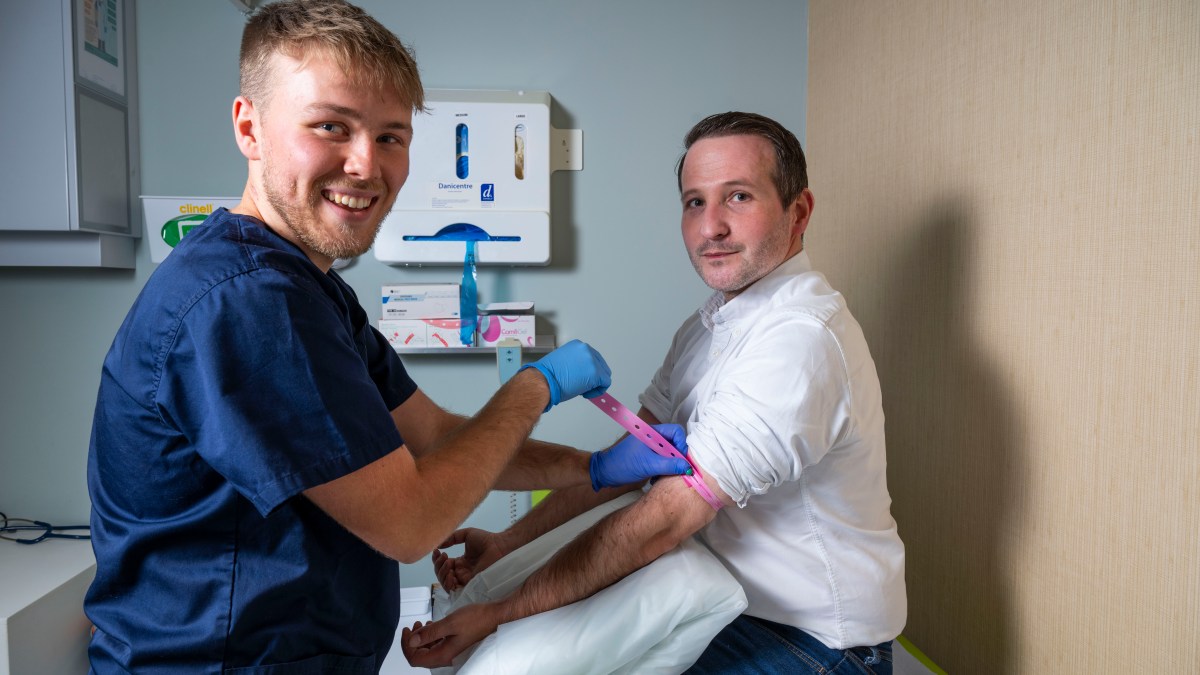
The £300 DNA test that shows how you’ll respond to 100+ drugs – The Times
- The £300 DNA test that shows how you’ll respond to 100+ drugs The Times
- Pilot scheme reveals how much DNA impacts the effectiveness of medicine The Comet
- 99% have genetic trait that stops common medicine working properly, study finds Daily Star
- Most adults carry genes affecting response to common medicines, Bupa study finds The Mirror
- Bupa study finds most adults carry genes impacting response to over-the-counter medicines Daily Express
Continue Reading
-

Different Forms of AI, Technology Can Be Beneficial in Preventive Cardiology
Artificial intelligence (AI) has been increasing in use across different forms of medicine, and preventive cardiology is no different. In a session held on August 1 at the ASPC 2025 Congress on Preventive Cardiology, experts discussed how both AI and technology can be used to improve the practice of preventing cardiovascular conditions—including language models, wearable technology, and mobile technology—to bring top care to patients.
Language Models Show Promise in Preventive Cardiology
Generative AI (genAI) is a popular form of AI that can produce content based on patterns learned from existing data, to generate text, video, audio, images, code, and other forms of content as prompted.
Ashish Sarraju, MD, FACC, the director of research at the preventive cardiology center at Cleveland Clinic, discussed how prevalent genAI already is in the preventive cardiology space, highlighting how findings already suggest responses to patient messages and clinic notes can be generated by gen AI. Also that it can be used to interpret data and images to give medical recommendations to patients.
“Cleveland Clinic, interested in this topic, did a survey last year of a nationally representative sample, asking how many people are using generative AI, and what do you think? A stunning 72% of patients said they would and have used generative AI to ask medical questions, and 65% said that they would trust the recommendations provided by the chatbot for their own health,” said Sarraju.
Sarraju hopes that genAI can not only be used for these methods but also to block accelerants of cardiovascular disease and improve prevention of these conditions. Accelerants of cardiovascular disease can include lack of health care access, underdiagnosis, poor risk stratification, delays in treatment, poor treatment implementation, and clinical trial underrepresentation, leading to incorrect assumptions regarding diagnosis or treatment. Lack of education from patients and clinician burnout can also contribute to the acceleration of cardiovascular disease.
genAI can help to close these gaps by allowing patients to get preventive cardiology recommendations from the chatbot, as previous research has shown that genAI can provide appropriate responses to common preventive cardiology questions 84% of the time.1 Screening for clinical trial enrollment may also improve when using genAI, as it can be used to scan electronic medical records to determine eligibility. He noted that the current state of readability in preventive cardiology overall is low, which genAI may be able to help with.
“The current state with readability leaves much to be improved,” he said. “There were great data led by Keon Pearson, MD, a resident at Stanford, suggesting that of 27 unique websites reviewed addressing the question of lipoprotein, only 1 website even crossed the lower bound of the recommended reading level, below the sixth-grade level.”
Addressing medication and treatment use may benefit from the use of genAI. Studies have previously shown that more than half of those who had been prescribed statins had discontinued their use, at least temporarily.2 genAI can be used to identify the reasons for these discontinuations as well as evaluate the public perceptions around medications.
With all of these impressive uses of genAI, it is easy to forget about the weaknesses of the platform. Public-facing misinformation regarding prevention is way more accessible and more numerous than accurate information, which may be used to train genAI and lead to the promotion of inaccurate information.
“I think we are at a point, especially with generative AI, where it has become democratized, where we can participate in the conversation in a much more robust manner than we could 10 years ago. You do not need to be a software engineer to understand the implications nor the penetration of these technologies potentially on our lives or our patients’ lives,” said Sarraju.
Sarraju questioned whether efforts to mitigate propagation through genAI should be undertaken, with conversations around what can be done to mitigate inappropriate uses of the technology.
AI and wearable technologies can help in the practice of preventive cardiology. | Image credit: AntonioDiaz – stock.adobe.com
Wearable and Mobile Technologies Can Provide Take-Home Care
Wearables and mobile technologies also have a promising future in preventive cardiology, according to Seth Martin, MD, MHS, FASPC, professor of medicine at Johns Hopkins University. Wearable technologies, he said, can help to empower patients and providers, improve outcomes, improve experience of care, and reduce health care costs when used effectively.
“I think when it comes to the applications of this in cardiovascular disease, in prevention, it’s really anything you can think of. It’s hard to think of something where these tools will not have an impact,” he said.
Technologies that can be utilized in this way include smartphone apps, smartwatches, text messaging, telehealth, virtual reality, and even AI to assess health and wellness, coronary disease, cardiometabolic risk, and mental health among other health applications. Measuring steps, heart rate, exercise, and heart rhythm can help doctors make informed decisions surrounding treatment methods for their patients. Using these technologies alongside community input or engagement can help to increase physical activity, promote adequate sleep, encourage healthy dietary intakes, and quit smoking, which can reduce disparities.
Although all of these new gadgets are exciting, throwing them at problems is not always the way to go, said Martin. Instead, doctors should understand what problem they are trying to solve and work backward to create solutions. This is the approach that was taken with the smartphone app, Corrie, to encourage cardiovascular health, which proved effective. After patients used the app, 30-day all-cause readmissions were only 6.5% compared with 16.8% in those who did not use the technology.3
“We basically gave a comprehensive smartphone tool to educate and empower patients to take an active role in their care,” said Martin. “In the post–myocardial infarction setting, they started using this app in the hospital, and as they transitioned home, it helped with meds and their lifestyle and so forth.”
Technology can also be used to deliver rehab for those who require it, including through asynchronous, synchronous, and combination methods. In the case of some patients, discharge papers may be discarded or not followed after the patient is discharged from the hospital. Apps that provide the care from home and on a more accessible level can be beneficial in making sure the therapies are being followed. Although recent studies on whether mHealth applications were better than usual care in adults have had underwhelming results, Martin emphasized that studies have at least shown equivalence, which is promising.
Physicians should welcome wearable and mobile technologies in their practices as soon as possible, Martin said, as well as inform their patients about which data are the most reliable with these technologies, primarily resting heart rates, step counts, and exercise minutes. He also emphasized training future leaders in technology to be used in the cardiovascular space.
“We can meet people where they are by embracing these technologies that are in our hands and on our wrists, that are increasingly integrated into our lives. I don’t think it’s about technology replacing us, but rather the master clinician of tomorrow learning to balance technology with human touch,” he concluded.
References
1. Sarraju A, Bruemmer D, Van Iterson E, Cho L, Rodriguez F, Laffin L. Appropriateness of cardiovascular disease prevention recommendations obtained from a popular online chat-based artificial intelligence model. JAMA. 2023;329(10):842-844. doi:10.1001/jama.2023.1044
2. Zhang H, Plutzky J, Skentzos S. Discontinuation of statins in routine care settings: a cohort study. Ann Intern Med. 2013;158(7):526-534. doi:10.7326/0003-4819-158-7-201304020-00004
3. Marvel FA, Spaulding EM, Lee MA, et al. Digital health intervention in acute myocardial infarction. Circ Cardiovasc Qual Outcomes. 2021; 14(7):e007741. doi:10.1161/CIRCOUTCOMES.121.007741
Continue Reading
-
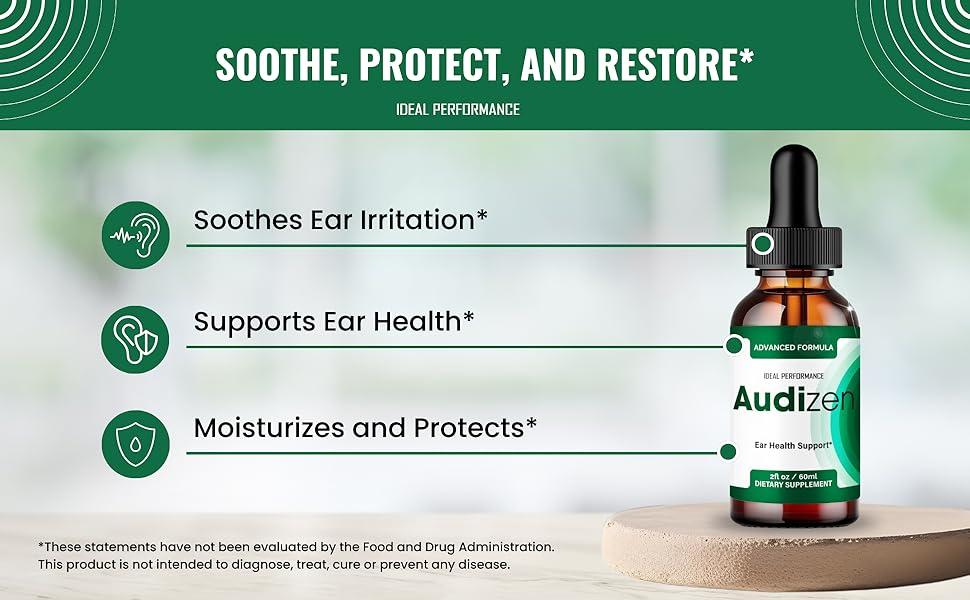
Audizen Drops Officially Launched: Natural Tinnitus Support
New York City, NY, Aug. 02, 2025 (GLOBE NEWSWIRE) —
Audizen Drops’ Official Launch: A Science-Backed Solution for Sciatic Nerve Discomfort – Audizen for Neuropathy
In 2025, a new contender has emerged in the realm of nerve health supplements: Audizen Drops, a liquid dietary supplement designed to address sciatic nerve discomfort. As the prevalence of sciatica and related neuropathic conditions rises, driven by factors like sedentary lifestyles and aging populations, Audizen Drops aims to provide a natural, science-informed approach to managing nerve pain. This article explores the official launch of Audizen Drops, its formulation, the science behind its ingredients, and its place in the evolving landscape of nerve health support, presented in a neutral and informative manner.
Explore Audizen – Inspired by Audifort, Now Available in US, UK, Canada & Australia
Understanding Sciatic Nerve Discomfort
The sciatic nerve, the body’s largest nerve, extends from the lower back through the hips, buttocks, and down each leg. When compressed or irritated, it can cause sciatica, a condition marked by sharp, radiating pain, numbness, tingling, or burning sensations along its path. Sciatica can stem from herniated discs, spinal stenosis, muscle imbalances, or prolonged sitting, with symptoms ranging from mild discomfort to severe, mobility-limiting pain. For many, sciatica disrupts daily activities, sleep, and overall well-being, prompting a search for effective, non-invasive solutions.
Traditional treatments, such as pain relievers, physical therapy, or corticosteroid injections, often focus on symptom relief but may not address underlying factors like inflammation or nerve sensitivity. This has fueled demand for natural supplements like Audizen Drops, which aim to support nerve health and reduce discomfort through a holistic approach.
The Official Launch of Audizen Drops
Audizen Drops, developed by Audizen Labs in the United States, was officially launched in 2025 as a liquid supplement tailored for sciatic nerve discomfort and neuropathy. Unlike conventional oral painkillers, Audizen Drops utilizes a sublingual delivery method—administered under the tongue—for faster absorption and bioavailability. The product is manufactured in FDA-registered, GMP-certified facilities, emphasizing purity, safety, and quality control. Audizen Labs positions the drops as a non-GMO, plant-based solution free of artificial additives, targeting health-conscious consumers seeking alternatives to pharmaceuticals.
The launch of Audizen Drops is rooted in the vision of its lead formulator, Dr. Sarah Mitchell, a neurologist inspired by her patients’ struggles with chronic nerve pain. The supplement is designed to address what Audizen Labs calls the “neuropathy triad”: inflammation reduction, nerve function support, and pain signal modulation. Available exclusively through the official Audizen website, the product comes with a 60-day money-back guarantee, reflecting the brand’s confidence in its efficacy.
Key Ingredients and Their Roles
Audizen Drops combines a blend of natural ingredients with scientific backing for nerve health and inflammation management. Below is an overview of its primary components and their purported benefits:
- Ginkgo Biloba Extract
Ginkgo biloba is renowned for improving blood circulation, particularly to peripheral nerves. Enhanced blood flow delivers oxygen and nutrients to the sciatic nerve, potentially reducing discomfort caused by poor circulation. Studies, such as those in Journal of Clinical Pharmacology (2019), suggest ginkgo biloba may alleviate neuropathic pain by supporting microcirculation and reducing oxidative stress. - Magnesium (as Magnesium Citrate)
Magnesium is critical for nerve function and muscle relaxation. It modulates NMDA receptors, which play a role in pain signaling. A 2021 study from the University of Maryland found that magnesium supplementation reduced neuropathic pain intensity by up to 38% in some patients. Magnesium citrate, used in Audizen Drops, is highly bioavailable, supporting nerve signal regulation and muscle comfort. - Vitamin B12 (Methylcobalamin)
Vitamin B12 is essential for nerve repair and maintaining the myelin sheath, which insulates nerve fibers. Deficiencies are linked to worsened neuropathy symptoms, including tingling and numbness. Research in Neurology (2020) indicates B12 supplementation can improve nerve function in neuropathic conditions, making it a key component for sciatica support. - Hibiscus Extract
Hibiscus is traditionally used for its anti-inflammatory properties. By reducing inflammation around the sciatic nerve, it may alleviate pressure and pain. While less studied for neuropathy specifically, hibiscus’s antioxidant effects, noted in Phytotherapy Research (2018), suggest potential benefits for reducing nerve-related inflammation. - Alpha-Lipoic Acid (ALA)
ALA is a powerful antioxidant that protects nerve cells from oxidative damage, a contributor to neuropathy. Clinical trials, such as those in Diabetes Care (2018), have shown ALA reduces burning and numbness in diabetic neuropathy, suggesting applicability for sciatica. Its ability to regenerate other antioxidants enhances its protective effects. - Hawthorn Berry Extract
Hawthorn supports cardiovascular health and circulation, ensuring nerves receive adequate blood flow. Its antioxidant properties, documented in Journal of Herbal Medicine (2020), may also reduce inflammation, supporting nerve health indirectly. - Gymnema Sylvestre
This herb is known for its anti-inflammatory and nerve-soothing properties. Preliminary studies, such as those in Journal of Ethnopharmacology (2017), suggest it may calm overactive nerve signals, reducing sensations like tingling or burning in neuropathic conditions. - Neurocalm Blend
Audizen’s proprietary Neurocalm Blend is described as a combination of adaptogenic herbs and nerve-supporting nutrients. While specifics are not fully disclosed, it likely enhances the formula’s calming and anti-inflammatory effects, targeting nerve hypersensitivity.
How Audizen Drops Work?
Audizen Drops employs a multi-pronged approach to address sciatic nerve discomfort:
- Reducing Inflammation: Hibiscus, hawthorn, and ALA target inflammation, a key driver of sciatic pain, by neutralizing free radicals and calming immune responses.
- Supporting Nerve Function: Vitamin B12, magnesium, and ginkgo biloba nourish nerve cells, promote repair, and enhance signal transmission.
- Improving Circulation: Ginkgo biloba and hawthorn ensure optimal blood flow to the sciatic nerve, reducing discomfort caused by nutrient deficiencies.
- Modulating Pain Signals: Gymnema sylvestre and the Neurocalm Blend soothe overactive nerves, reducing sensations like burning or tingling.
The sublingual delivery method allows ingredients to bypass the digestive system, entering the bloodstream directly for faster effects. Users are advised to take 2–6 drops daily under the tongue, preferably with a meal, for consistent results. Some report noticing improvements within weeks, though Audizen Labs recommends 60–90 days of use for optimal benefits.
The Science Behind Audizen Drops
The ingredients in Audizen Drops are supported by varying degrees of scientific evidence. Ginkgo biloba’s role in improving circulation is well-documented, with a 2019 meta-analysis in Journal of Clinical Pharmacology noting its efficacy in reducing neuropathic symptoms. ALA has shown promise in clinical trials for diabetic neuropathy, with a 2018 study in Diabetes Care reporting a 30% reduction in pain scores after 12 weeks. Vitamin B12 and magnesium also have robust evidence for nerve health, with studies like the 2020 Neurology trial highlighting their role in nerve repair.
However, some ingredients, like hibiscus and gymnema sylvestre, have less direct evidence for sciatica specifically, relying more on their general anti-inflammatory and nerve-soothing properties. The proprietary Neurocalm Blend’s lack of transparency raises questions about its exact contributions, as independent evaluation is challenging. While Audizen Drops offers a promising blend, it is not a replacement for medical treatments addressing structural causes of sciatica, such as herniated discs.
User Experiences and Feedback
Since its 2025 launch, Audizen Drops has received mixed feedback. Users on the official website report reduced pain and improved mobility, with one 52-year-old user from Texas noting a “significant decrease in leg numbness” after six weeks. Another user, aged 47, reported better sleep due to less nerve discomfort.
However, some independent reviews on platforms like Snoopviews express skepticism, with one user describing minimal effects after three weeks and concerns about unclear ingredient details. Mild side effects, such as slight digestive upset, have been reported but are rare. Audizen Drops is comparable to other premium nerve supplements.
Multi-bottle packages offer discounts, and the 60-day refund policy mitigates risk. Critics note that the cost may be high compared to standalone magnesium or B12 supplements, though the liquid format and comprehensive formula justify the price for some.
Safety and Considerations
Audizen Drops is formulated with natural, non-GMO ingredients and is free of stimulants, making it generally safe for daily use. However, individuals on blood thinners or with chronic conditions should consult a healthcare provider, as ginkgo biloba may interact with certain medications.
The sublingual method enhances absorption but requires consistent use for best results. Pregnant or nursing individuals should avoid use without medical advice. The exclusive online availability ensures product authenticity but may inconvenience those preferring retail purchases. Audizen Labs advises buying only from the official website to avoid counterfeits.
Audizen Drops in the Market
Audizen Drops enters a crowded market alongside supplements like SciatiEase and Nerve Renew, which also target sciatic nerve discomfort. Its liquid format and sublingual delivery set it apart, offering faster absorption than capsules. The inclusion of ginkgo biloba and ALA aligns with evidence-based trends, though proprietary blends like Neurocalm may draw scrutiny for transparency.
Compared to competitors, Audizen’s focus on both nerve health and inflammation reduction is a strength, but it’s not a cure for structural sciatica causes. It’s best suited as a complementary tool alongside physical therapy, exercise, or posture correction.
The Future of Audizen Drops
As Audizen Drops gains traction post-launch, its success will depend on consistent user outcomes and further transparency about its proprietary blend. The science behind its core ingredients is promising, and the sublingual format offers a novel delivery method.
For those seeking a natural approach to sciatic nerve discomfort, Audizen Drops provides a compelling option, though it should be paired with medical advice for comprehensive care.
Discover the Science Behind Audizen Drops for Hearing Clarity and Tinnitus Relief
In summary
Audizen Drops’ official launch introduces a thoughtfully crafted supplement for sciatic nerve discomfort and neuropathy. By targeting inflammation, nerve health, and pain signals, it offers a natural path to relief, backed by a 60-day guarantee. While not a standalone solution, it represents a meaningful step toward holistic nerve health support.
Project Name: Audizen Drops
Address: 382 NE 191st St PMP 82029 Miami, FL, 33179, USA
Postal Code: 33179
Media Contact
Email: support@getaudizen.com

Continue Reading
- Ginkgo Biloba Extract
-
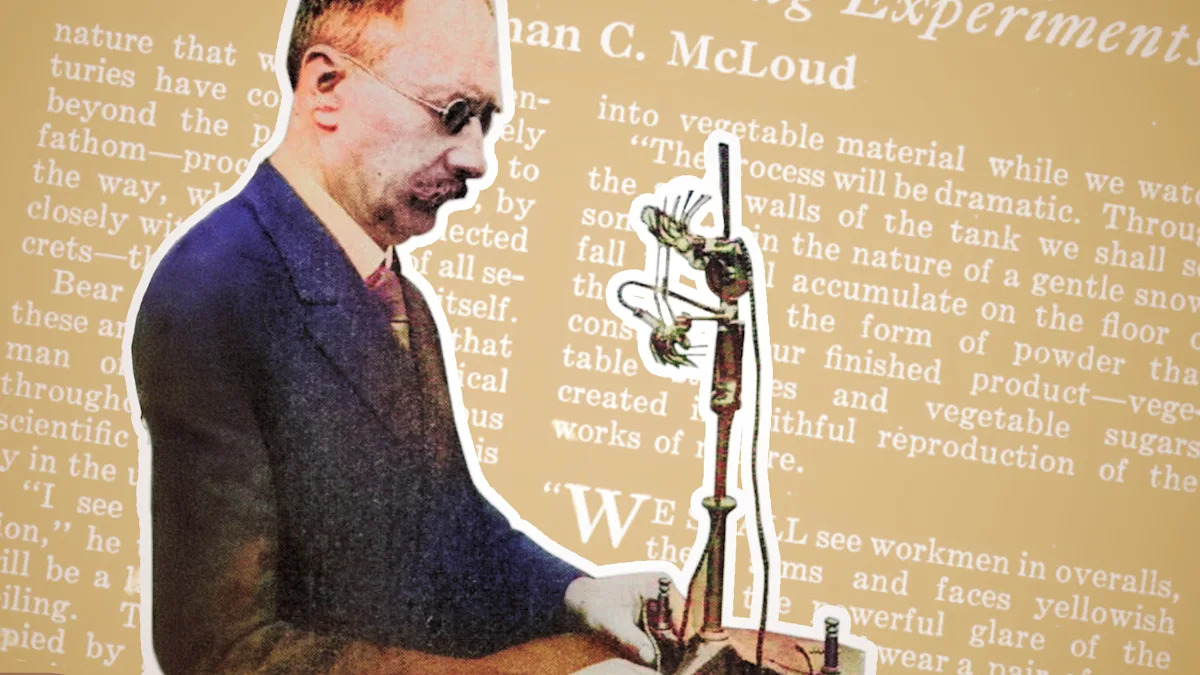
100 years ago, scientists thought we’d be eating food made from air
In the early 1920s, on the left bank of the Seine just outside Paris, a small laboratory garden bloomed on a plot of land sandwiched between the soaring Paris Observatory and the sprawling grounds of Chalais Park. Unlike a typical garden filled with well-groomed plants and the smell of fresh-turned soil, this garden had an industrial feel. Dubbed “the Garden of Wonders” by a contemporary journalist, the plot was lined with elevated white boxes fed with water from large glass canisters. Nearby greenhouses included equally unusual accessories. But it’s what happened inside the low-slung laboratory buildings that made this garden so wondrous.
In August 1925, Popular Science contributing writer Norman C. McCloud described how Daniel Berthelot—a decorated chemist and physicist from France—was conducting revolutionary “factory-made vegetable” experiments in his Garden of Wonders. Berthelot, son of Marcellin Berthelot, a renowned 19th century chemist and French diplomat, was using the garden to expand upon his father’s groundbreaking work. Starting in 1851, the elder Berthelot began creating synthetic organic compounds, such as fats and sugars (he coined the name “triglyceride”), from inorganic compounds like hydrogen, carbon, oxygen, and nitrogen. It was a revolutionary first step toward artificial food.
“[The younger] Berthelot already has produced foodstuffs artificially by subjecting various gases to the influence of ultra-violet light,” wrote McCloud. “These experiments,” he added, quoting Berthelot, “show that by means of light, vegetable foods can be manufactured from air gases.” But Berthelot’s experiment didn’t exactly catch on. A century later, most food is still grown the traditional way—by plants—but the idea of manufacturing food in controlled, factory environments has been gaining ground. In fact, Berthelot’s revolutionary idea may finally be bearing fruit—just not in the way he imagined.
Daniel Berthelot takes notes in his so-called “Garden of Wonders” next to elevated white boxes fed with water from large glass canisters. Image: Popular Science, August 1925 issue
A revolution in food chemistry
Berthelot never fully accomplished his goal of trying to artificially reproduce what plants do naturally. Nonetheless, his experiments, as sensational as they might seem today, would have been considered quite plausible in 1925. That’s because his father’s discoveries had unleashed a revolution in chemistry and a tidal wave of optimism about the future of food. By the 1930s, chemists had begun synthesizing everything from basic nutrients, like vitamins, to medicines, like aspirin (acetylsalicylic acid), to food additives, such as artificial thickeners, emulsifiers, colors, and flavors.
In an interview for McClure’s magazine in 1894 dubbed “Foods in the Year 2000,” Berthelot’s father boldly predicted that all foods would be artificial by the year 2000. “The epicure of the future is to dine upon artificial meat, artificial flour, and artificial vegetables,” wrote Henry Dam for McClure’s, articulating Marcellin Berthelot’s vision. “Wheat fields and corn fields are to disappear from the face of the earth. Herds of cattle, flocks of sheep, and droves of swine will cease to be bred because beef and mutton and pork will be manufactured direct[ly] from their elements.”
Welcome to the Garden of Wonders
Such was the vision that the younger Berthelot was pursuing in his Garden of Wonders. His goal, he told McCloud, was to produce “sugar and starch from the elements without the intervention of living organisms.” To achieve this, Berthelot envisioned a factory with “glass tanks of great capacity.” Gases would be pumped into the tanks, and “suspended from the ceiling [would] be lamps producing the rays of ultra-violet light.” Berthelot imagined that when the chemical elements combined “through the glass walls of the tank we shall see something in the nature of a gentle snowfall that will accumulate on the floor of the tanks…our finished product—vegetable starches and vegetable sugars created in a faithful reproduction of the works of nature.”
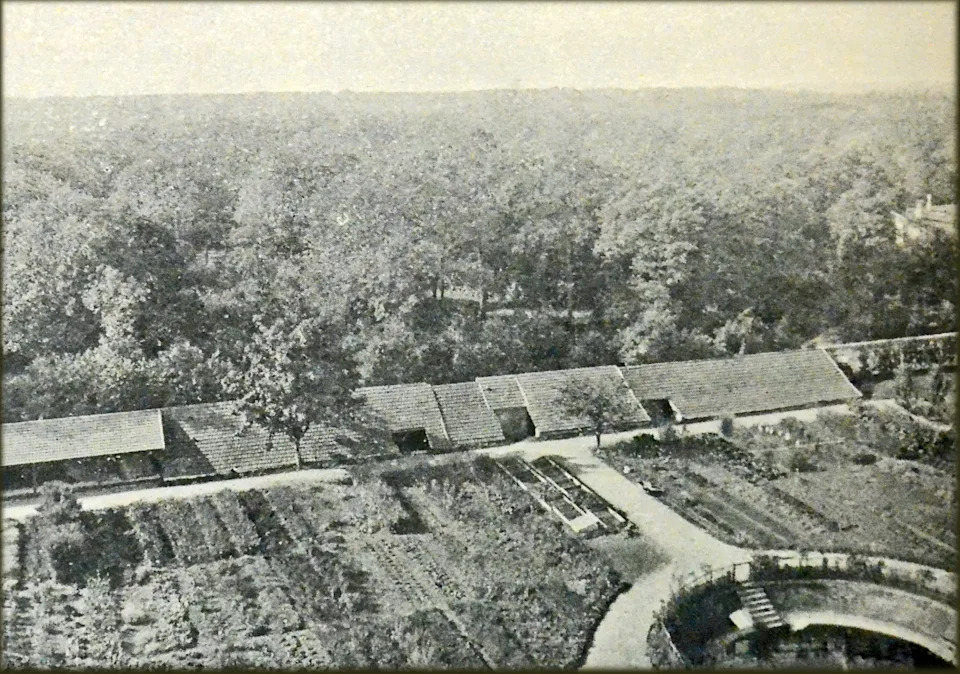 An aerial view of the experimental “Garden of Wonders” in Meudon, France, where chemist Daniel Berthelot explored ways to grow food without traditional soil or farming methods. Image: Public Domain
An aerial view of the experimental “Garden of Wonders” in Meudon, France, where chemist Daniel Berthelot explored ways to grow food without traditional soil or farming methods. Image: Public DomainBy 1925, he had succeeded in using light and gas (carbon, hydrogen, oxygen, and nitrogen) to create the basic compound formamide, which is used to produce sulfa drugs (a kind of synthetic antibiotic) and other medicines as well as industrial products. But his progress toward reproducing photosynthesis ended there. Berthelot died just two years after McCloud’s story ran in Popular Science, in 1927, without ever realizing his dream.
Despite the bold predictions of the time, producing food from only air and light was wildly aspirational in 1925, if for no other reason than photosynthesis was poorly understood. The term had only been coined a few decades earlier when Charles Barnes, an influential American botanist, lobbied for a more precise description of a plant’s internal mechanisms than the generic “assimilation” then in favor. Chlorophyll had been discovered in the prior century, but what happened at a cellular level in plants remained largely theoretical until the 1950s. Although Berthelot may have been onto something with his experiments, adding to the momentum that became the artificial food industry, he was a long way from replicating what comes naturally to plants. We still are, but recent discoveries may have enabled a workaround—depending on your definition of “food.”
A modern answer to Berthelot’s innovative garden
From vertical indoor farms to hydroponics to genetically modified crops, since the 1960s commercial agriculture has been focused on coaxing more yield from fewer resources, including land, water, and nutrients. The drive began when Nobel Peace Prize winner Norman Borlaug, an American biologist, helped spark the Green Revolution by selectively breeding a grain-packed, dwarf variety of wheat. The theoretical limit of that revolutionary goal would liberate food production from traditional agriculture altogether, eliminating all resources except air and light—Berthelot’s original vision.
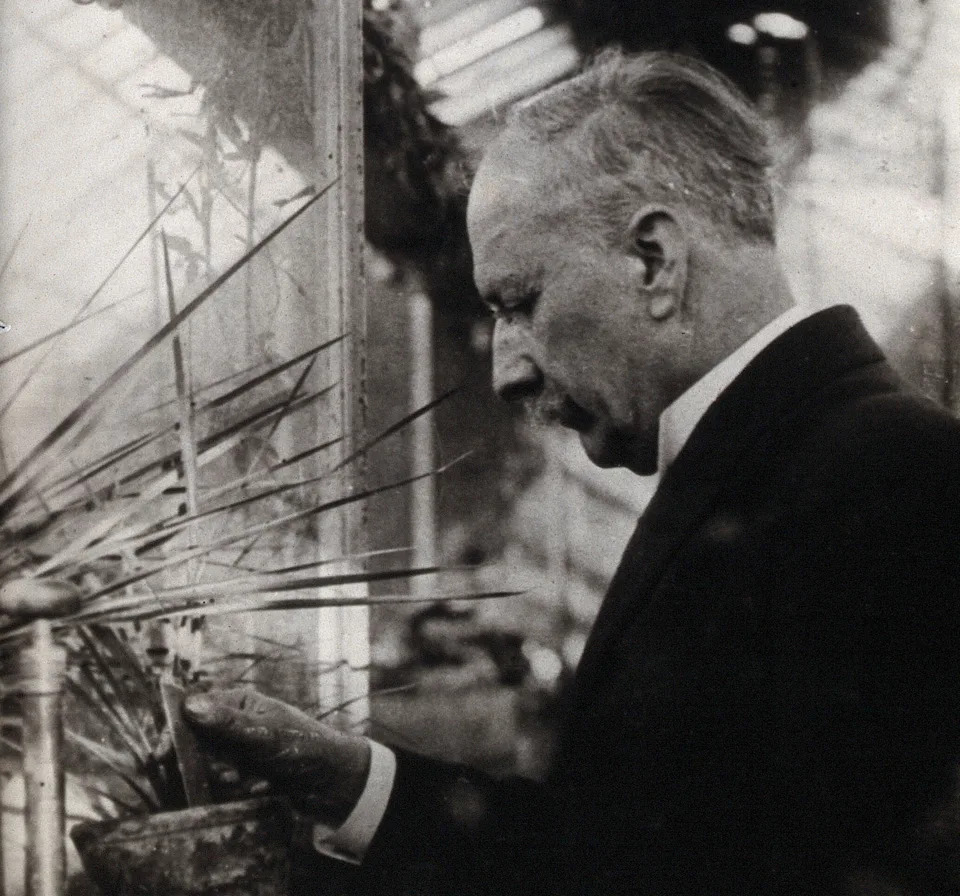 Daniel Berthelot (shown here) died in 1927, never achieving his dream of creating food from air, water, and light. Image: Public Domain
Daniel Berthelot (shown here) died in 1927, never achieving his dream of creating food from air, water, and light. Image: Public DomainIn the last century, we’ve inched toward creating food from nothing, making progress by teasing apart the incredibly complex biochemical pathways associated with plant physiology. But if we’ve learned anything since Berthelot’s experiments, it’s that photosynthesis—what plants are naturally programmed to do—can’t be easily replicated industrially. But that hasn’t stopped a handful of companies from trying.
In April 2024, Solar Foods opened a factory in Vantaa, Finland—a sleek facility where workers monitor large tanks filled with atmospheric gases. Inside the tanks, water transforms into a protein-rich slurry. Dehydrated, the slurry becomes a golden powder packed with protein and other nutrients, ready to be turned into pasta, ice cream, and protein bars. The powdery substance, Solein, resembles Berthelot’s vision, as does the factory, which uses atmospheric gases to enable “food production anywhere in the world,” according to a 2025 company press release, “as production is not dependent on weather, climate conditions, or land use.” But the similarities with Berthelot’s vision end there. Solar Foods may not require land or plants to produce food, but their technology derives from a living organism. Using a form of fermentation, it relies on a microbe to digest air and water to produce protein.
Related Archival Stories
100 years ago, scientists predicted we’d live to 1,000 years old
100 years ago, the battle for television raged
A century ago, suspended monorails were serious mass-transit contenders
100 years of deep-sea filmmaking and ocean exploration
100 years of aliens: From Mars beavers to little gray men
The U.S.-based company Kiverdi uses a similar microbial fermentation process, first devised by NASA as far back as the 1960s for deep space travel, to convert carbon dioxide into protein. Austria-based Arkeon Technologies has developed its own microbial fermentation process to also produce food from carbon dioxide without the need for land or other nutrients. Microbial fermentation may represent a promising new chapter in synthetic foods, but don’t expect tomatoes or corn to materialize from thin air anytime soon—it’s not artificial photosynthesis.
While Berthelot’s understanding of photosynthesis was primitive a century ago, he was ahead of his time in many ways, and his vision was remarkably prescient. Although we still haven’t figured out how to replicate photosynthesis chemically—literally growing fruits and vegetables as plants do from air and light—it’s worth acknowledging the strides we’ve made in just the last decade: Companies like Arkeon Technologies and Kiverdi may help remove excess carbon dioxide from the atmosphere while offering solutions to future food shortages. Or they may not. Only the next century will tell.
Continue Reading
